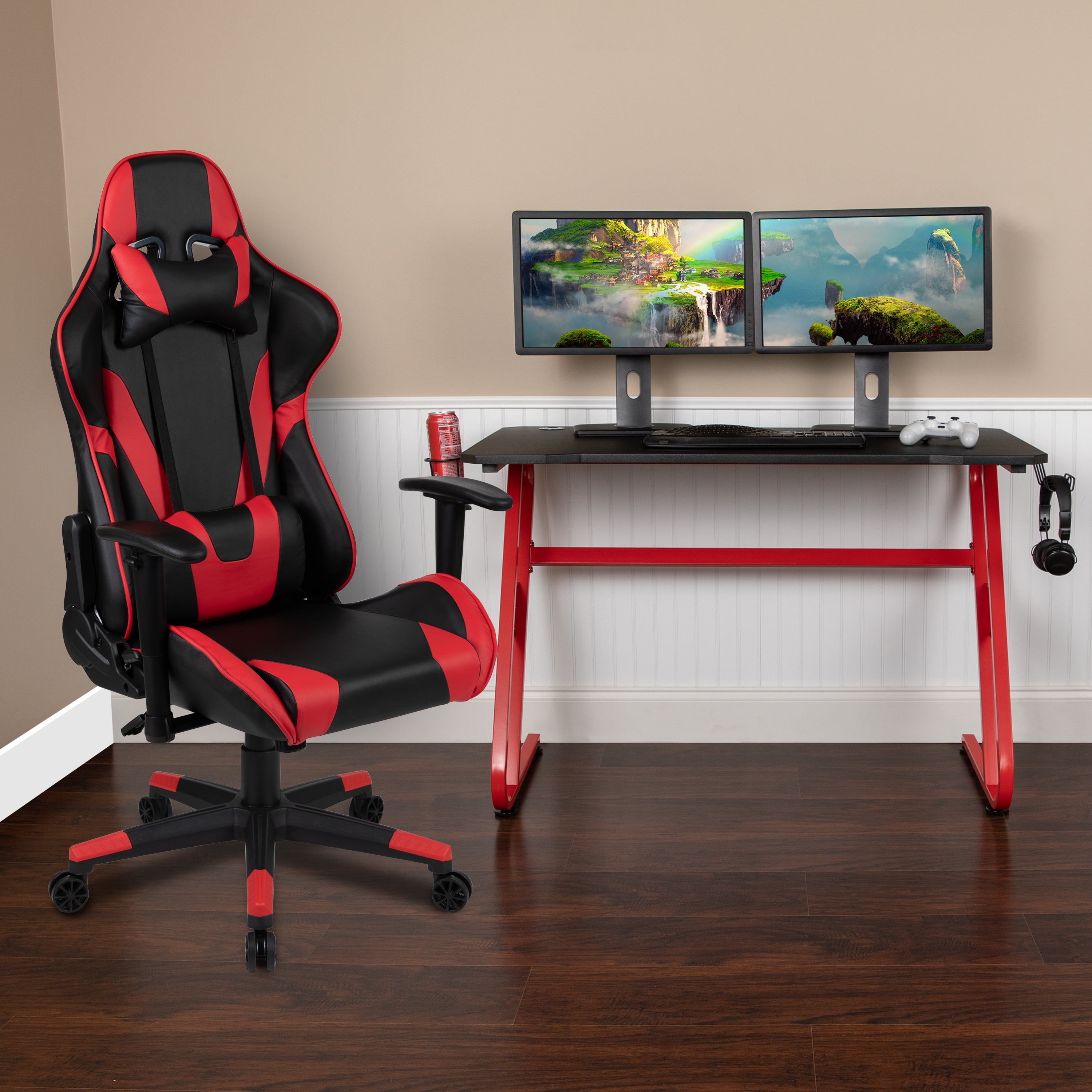Factors Influencing Computer Desk and Chair Bundle Purchases

The decision to purchase a computer desk and chair bundle is rarely impulsive. Consumers weigh several crucial factors before committing to a purchase, seeking a balance between functionality, aesthetics, and budget. Understanding these influencing factors is vital for both consumers and businesses in the furniture industry. This analysis will explore three major factors: budget constraints, ergonomic considerations, and aesthetic preferences, examining their impact across different consumer demographics.
Budgetary Considerations in Computer Desk and Chair Bundle Purchases
Budget significantly shapes the purchasing decision. The price range for computer desk and chair bundles spans considerably, from economical options under $200 to high-end setups exceeding $1000. Consumers with tighter budgets often prioritize affordability, potentially sacrificing features like adjustability or high-quality materials. Conversely, those with higher disposable income might focus on premium features, prioritizing ergonomics, durability, and aesthetics. This financial constraint directly influences the quality and features available to the consumer. A limited budget might mean opting for a simpler design or sacrificing features like built-in storage.
Ergonomic Factors in Computer Desk and Chair Bundle Purchases
Ergonomics plays a crucial role, especially for consumers who spend extended periods sitting at their desks. A poorly designed setup can lead to discomfort, pain, and even long-term health issues. Consumers are increasingly aware of the importance of posture and comfort, leading to a higher demand for adjustable chairs and desks that promote good posture. Features like adjustable height, lumbar support, and breathable materials are highly valued. The long-term health implications of poor ergonomics are a major motivator for consumers to invest in ergonomic bundles, even if it means a higher upfront cost.
Aesthetic Preferences in Computer Desk and Chair Bundle Purchases
While functionality and budget are paramount, aesthetics also influence purchase decisions. Consumers want their workspace to reflect their personal style and create a visually appealing environment. The color, design, and materials of the desk and chair contribute to the overall aesthetic appeal. Modern minimalist designs are popular among some, while others prefer more traditional styles. The aesthetic integration of the bundle with existing room décor is a significant consideration. This is especially true for those who work from home and spend a significant amount of time in their home office.
Impact of Factors Across Different Consumer Demographics, Computer desk and chair bundle
Understanding how these factors vary across demographics is crucial for effective marketing.
Computer desk and chair bundle – Students:
- Budget is often the primary concern. Students usually operate on a limited budget and prioritize affordability over premium features.
- Ergonomics are important, but often secondary to cost. They may compromise on perfect ergonomics if it significantly increases the price.
- Aesthetics are less critical than for professionals, although a visually appealing setup can still be a motivating factor.
Professionals:
- Budget is a factor, but less restrictive than for students. Professionals are willing to invest more in quality and comfort.
- Ergonomics are highly prioritized. Long working hours necessitate a comfortable and supportive setup to maintain productivity and prevent health issues.
- Aesthetics are important, reflecting professionalism and personal style. A well-designed workspace can enhance productivity and create a positive work environment.
Gamers:
- Budget varies widely depending on the gamer’s income and level of dedication. High-end gaming setups can be expensive.
- Ergonomics are important for long gaming sessions, but often secondary to features that enhance gaming performance (e.g., desk size for multiple monitors).
- Aesthetics are often highly prioritized, with RGB lighting and visually striking designs being popular choices.
Marketing Strategies Targeting Specific Consumer Priorities
Ergonomics-Focused Marketing:
This strategy would highlight the long-term health benefits of ergonomic design. Marketing materials would emphasize features like adjustable height, lumbar support, and breathable materials, using testimonials from satisfied customers and possibly incorporating medical professional endorsements. Content marketing could focus on the negative consequences of poor posture and the positive impact of a well-designed ergonomic setup on productivity and well-being.
Budget-Focused Marketing:
This approach would focus on value and affordability. Marketing materials would highlight the competitive pricing and emphasize the essential features offered at a lower price point. Promotional offers and bundles could be utilized to attract budget-conscious consumers. The marketing message would stress that a functional and comfortable setup doesn’t need to break the bank. Clear and concise product descriptions highlighting key features without unnecessary jargon would also be beneficial.
